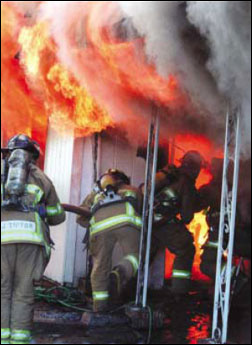Enhancing Community Safety: The Role of Non-Emergency Fire Departments
In every community, the fire department plays a vital role in ensuring the safety and well-being of its residents. While emergency response is their primary function, many fire departments also offer non-emergency services that are equally important in promoting community safety. This article explores the significance of non-emergency fire department services and how they contribute to creating safer environments for everyone.
Don’t be afraid to give up the good to go for the great. You can request publication of your article for publication by sending it to us via our Email below. businesshabblog@gmail.com or SMS/WhatsApp) or call +2347034920650. Click here to start business now with businesshab.com
Non Emergency Fire Dept

1. Community Outreach and Education
Non-emergency fire departments are actively involved in community outreach and education programs. These initiatives aim to educate residents about fire safety, prevention, and preparedness. Through workshops, seminars, and school programs, fire departments impart valuable knowledge about fire hazards, escape plans, and the proper use of fire extinguishers. By raising awareness, these departments empower individuals and families to take proactive measures, ultimately reducing the risk of fires in homes and businesses.
2. Inspections and Code Enforcement
Non-emergency fire departments conduct routine inspections of public buildings, schools, hospitals, and businesses. They ensure that these structures comply with fire safety codes and regulations, such as having functional fire alarms, sprinkler systems, and emergency exits. By enforcing these standards, non-emergency fire departments prevent potential disasters and create a safer environment for everyone.
3. Public Services and Assistance
Non-emergency fire departments provide various public services that enhance community safety. These services include assisting with car seat installations, conducting wellness checks for the elderly and disabled, and even rescuing animals from precarious situations. By offering these services, fire departments demonstrate their commitment to the well-being of the community beyond emergency situations.
4. Community Resilience and Disaster Preparedness
Non-emergency fire departments play a crucial role in enhancing community resilience and disaster preparedness. They collaborate with other local agencies to develop and implement disaster preparedness plans. By organizing drills and simulations, these departments help residents and businesses prepare for natural disasters, such as earthquakes, floods, and wildfires. These proactive measures ensure that communities can respond effectively to emergencies, minimizing potential damage and casualties.
5. Non Emergency Fire Dept:
Getting the best out of a non-emergency fire department involves understanding their services and actively engaging with them to enhance your community’s safety and preparedness. Here are some steps you can take:
6. Familiarize Yourself with Available Services:
Research and understand the non-emergency services offered by your local fire department. These might include community education programs, safety workshops, inspections, and public assistance services.
7. Attend Community Workshops and Seminars:
Participate in fire safety workshops and seminars organized by the non-emergency fire department. These events provide valuable information on fire prevention, safety measures, and emergency preparedness. By attending, you can learn important skills and protocols to keep your family and property safe.
8. Schedule Home Safety Inspections:
Contact the fire department to schedule a home safety inspection. Experienced professionals can identify potential hazards in your home and offer guidance on how to mitigate these risks. This service is especially beneficial for families with young children or elderly members.
9. Volunteer and Get Involved:
Many non-emergency fire departments welcome volunteers. By actively participating, you can contribute to community safety initiatives. Volunteer roles may include assisting with educational programs, distributing safety materials, or organizing community events. Your involvement can make a significant difference in promoting fire safety awareness.
10. Stay Informed:
Stay updated on local regulations and safety guidelines related to fire prevention. Non-emergency fire departments often share important information through their websites, social media channels, and community newsletters. Being aware of these updates helps you stay proactive in ensuring your home and community are safe.
11. Encourage Others to Participate:
Spread awareness about the non-emergency services offered by the fire department within your community. Encourage your neighbours, friends, and family members to participate in workshops and take advantage of safety inspections. The more people are educated and involved, the safer the entire community becomes.
12. Collaborate during Emergency Preparedness Drills:
Participate in emergency preparedness drills organized by the fire department. These drills simulate various disaster scenarios and help community members and organizations practice their response plans. By actively engaging in these exercises, you enhance your preparedness for real-life emergencies.
13. Provide Feedback and Suggestions:
If you have ideas or suggestions for improving community safety, share them with the non-emergency fire department. Your input can help them tailor their programs and services to better meet the needs of the community.
By actively engaging with your local non-emergency fire department and taking advantage of their services, you can contribute to a safer community while also ensuring the well-being of your family and neighbours.
Conclusion
Non-emergency fire departments are invaluable assets to communities, actively promoting safety, education, and preparedness. Their efforts go far beyond responding to emergencies; they actively engage with residents, educate them about fire safety, enforce regulations, provide essential services, and enhance overall community resilience. By recognizing the significance of non-emergency fire department services, communities can work together with these dedicated professionals to create safer, more secure environments for everyone.